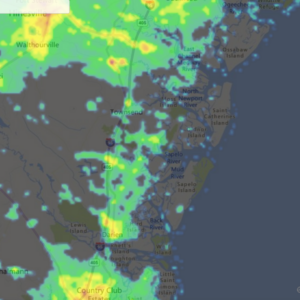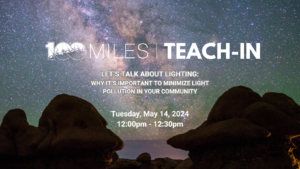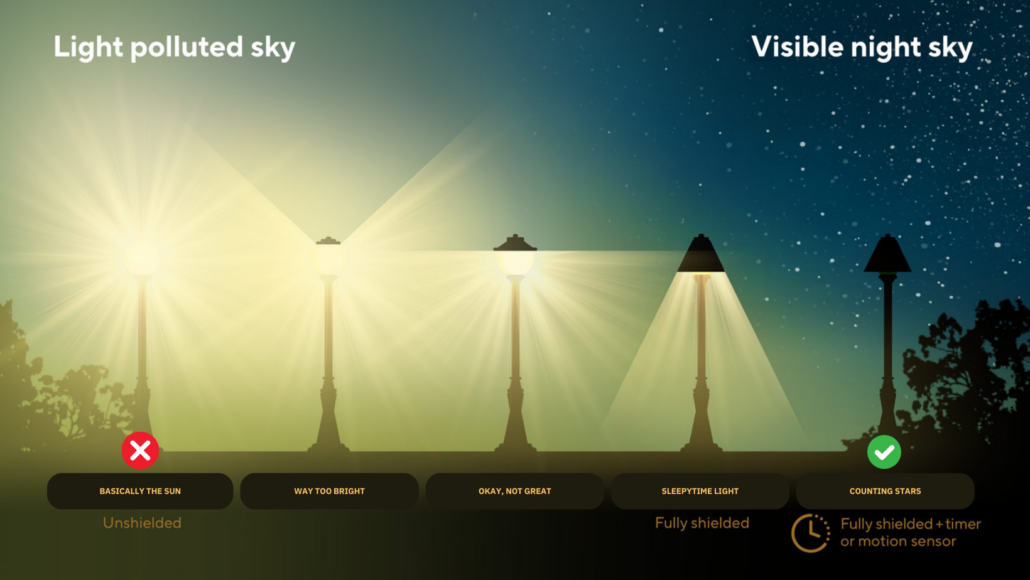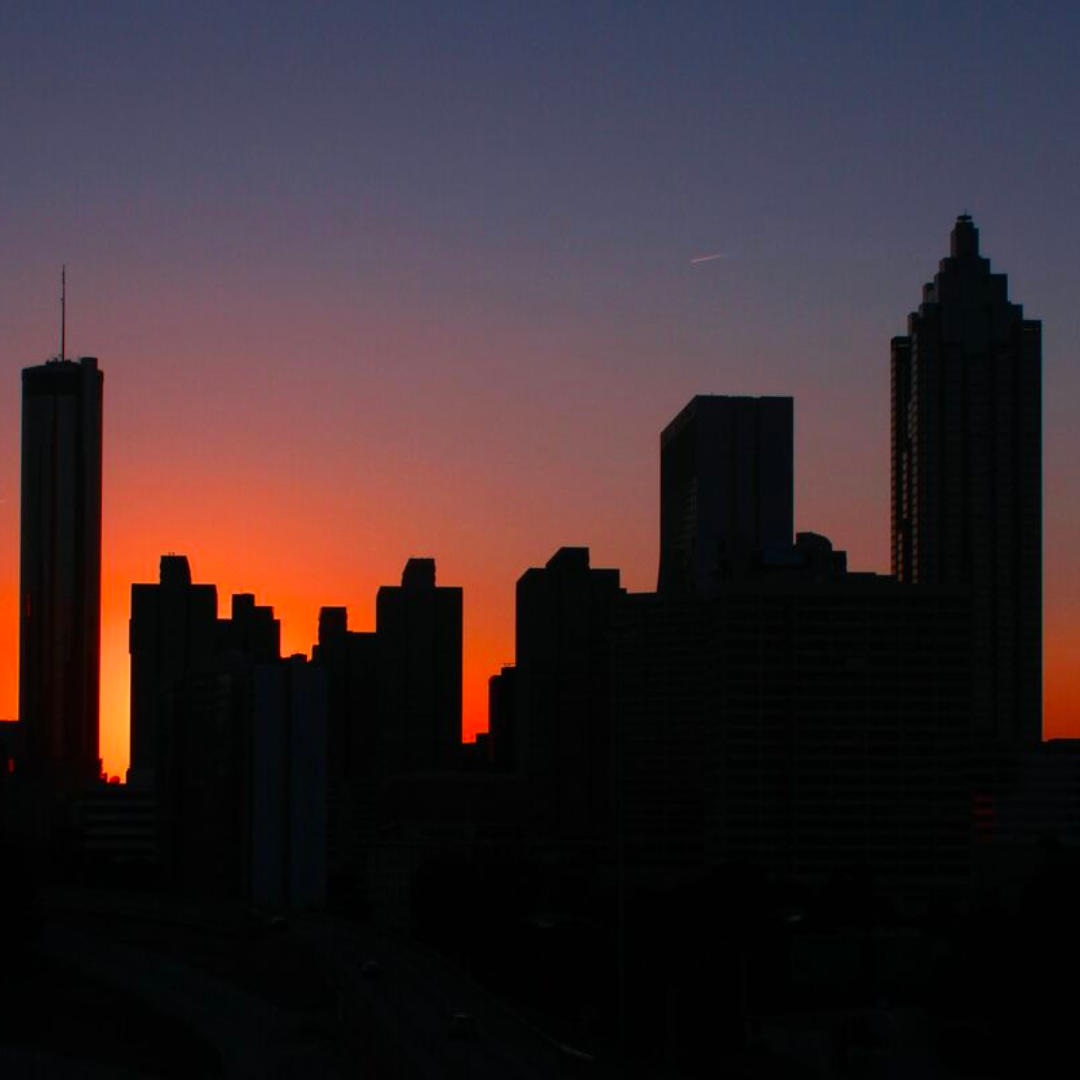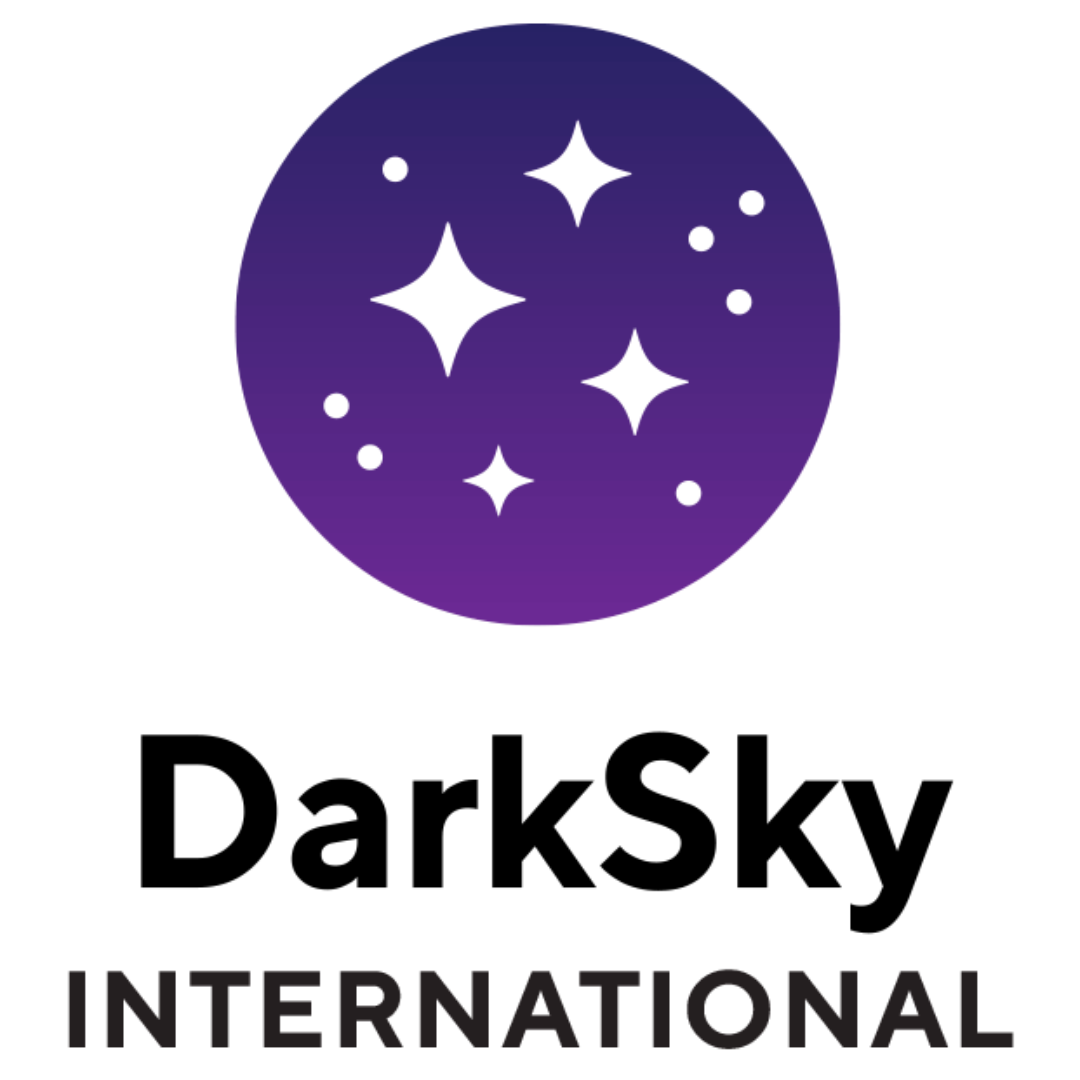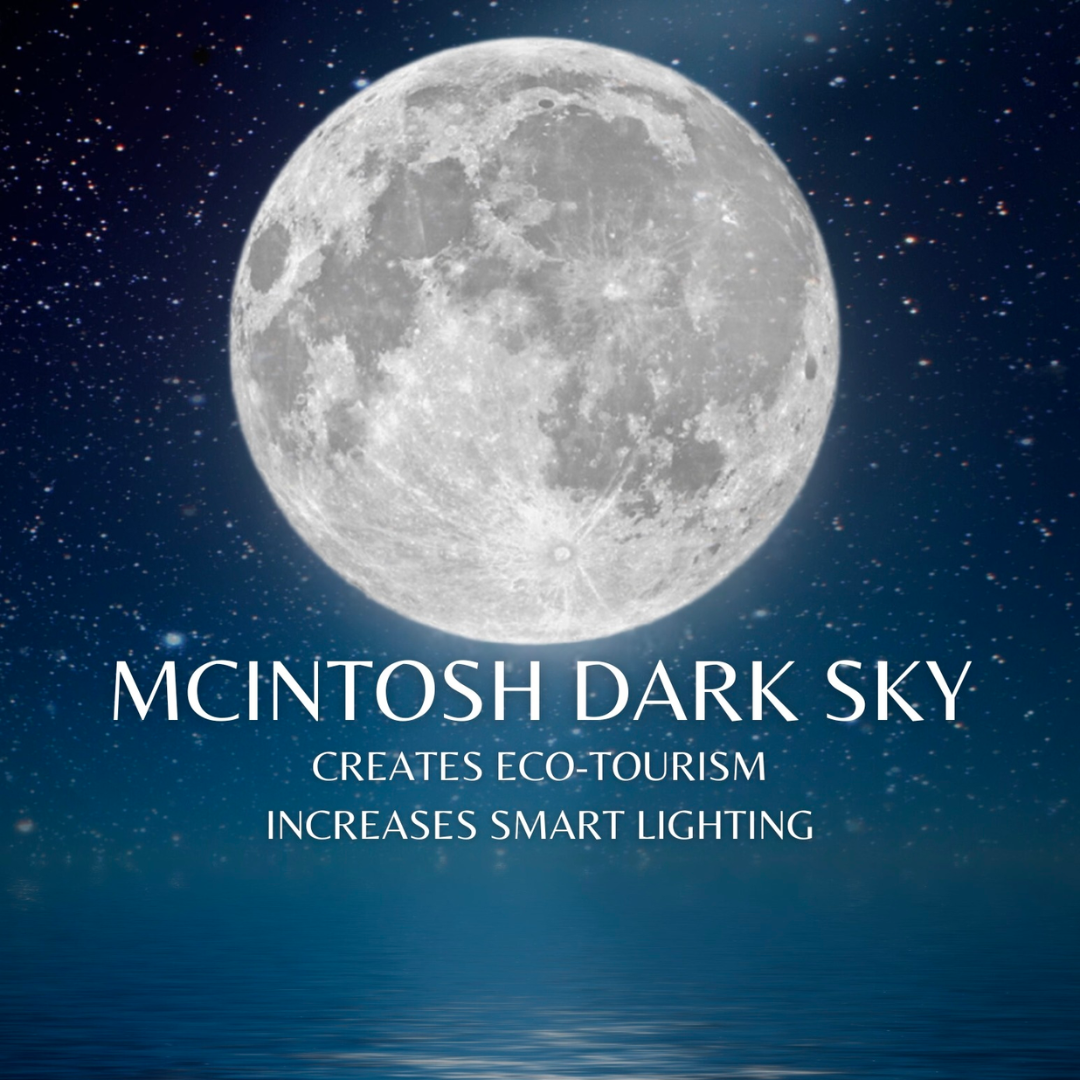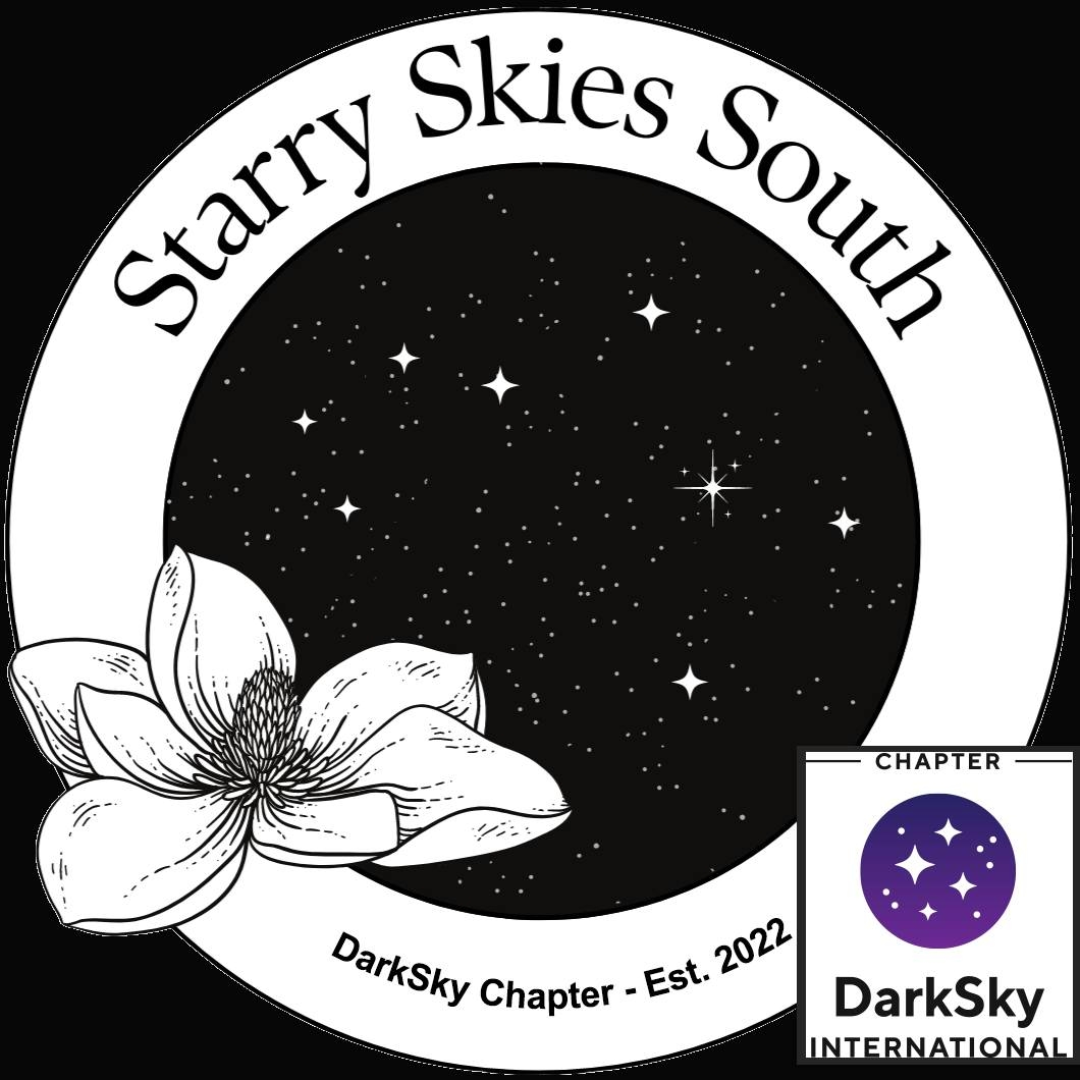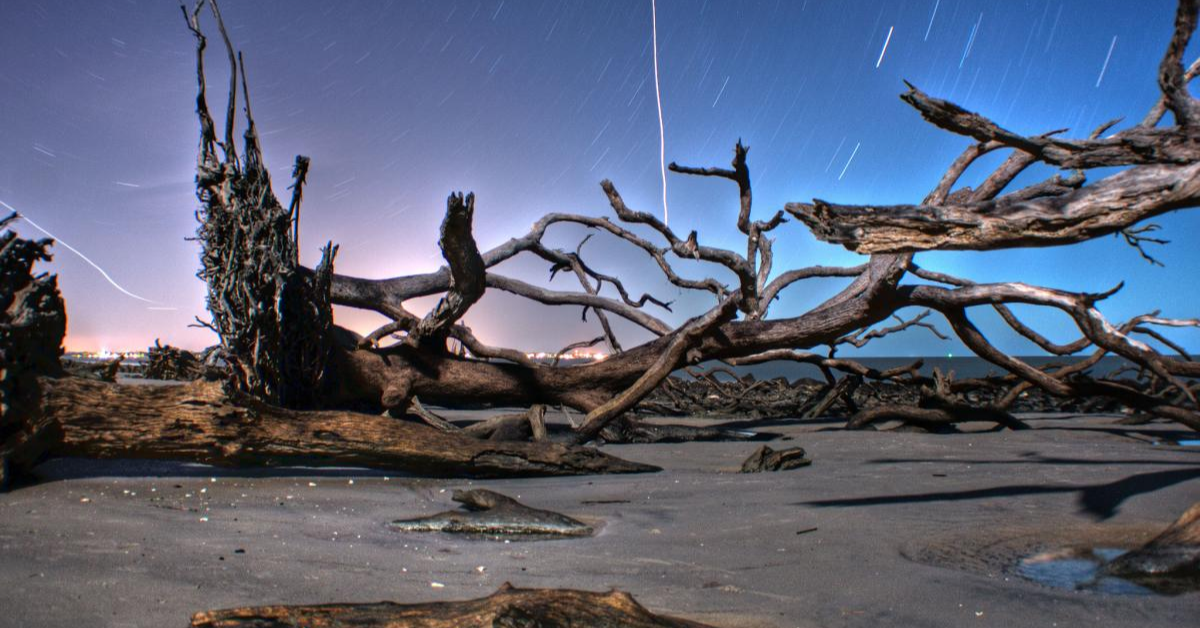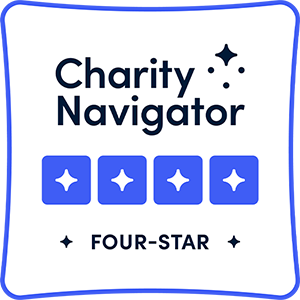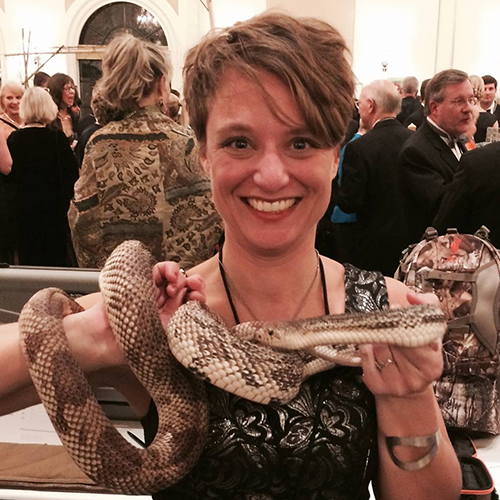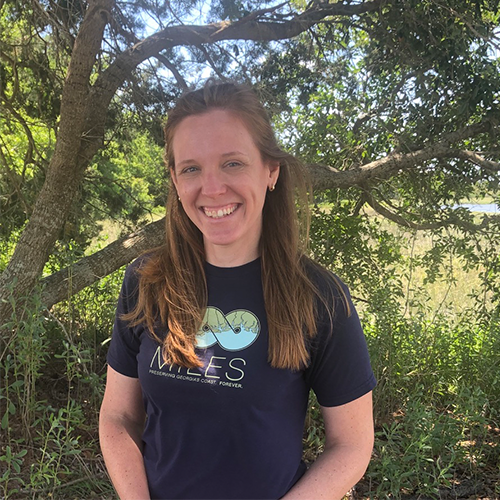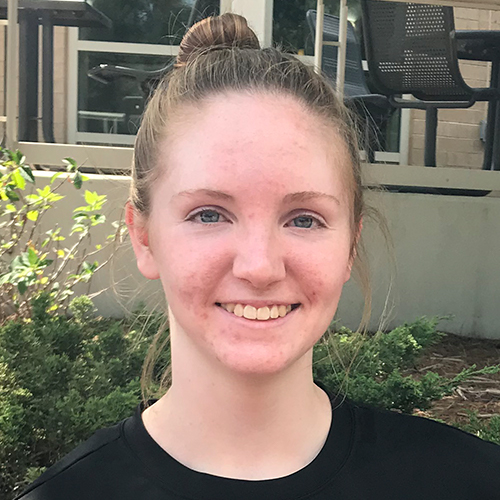Creating a Dark Sky Corridor
McIntosh County is situated in the center of Georgia’s 100-mile coast. Unlike its port neighbors to the north and south, McIntosh remains largely undeveloped. Its rural character and large tracts of “empty” land are an invaluable asset to our rapidly industrializing coast. These dark sky spaces are vital habitat for wildlife and boost the local economy through ecotourism.
We envision a space where natural assets, such as access to unhindered views of the cosmos, are recognized as key to ecological and public health and economic progress. Alongside communities, businesses, and government entities, we’re working to establish McIntosh County as a Dark Sky corridor—a space where wildlife, people, and economies can thrive thanks to smart lighting, conscientious zoning, and intentional protection of the night sky.
There are many different businesses, sites, and communities in McIntosh that are working toward Dark Sky designation. If you are interested in joining the movement, please contact Susan to have your night sky measured!
Did you know?
Shielded lights minimize glare and reduce light trespass so we don’t pollute the night sky. DarkSky lists ample options for businesses and individuals to make this simple, effective change.
Caring for our Wild Neighbors
As the nighttime brightens, the circadian and seasonal rhythms of our local and migratory wildlife and plant life are thrown off-balance—or obliterated completely. OHM and partners are advocating for policies and initiatives to eliminate the nighttime threat to our coastal natural world.
Wildlife-friendly Lighting
During sea turtle and shorebird nesting season, protecting the darkness of our beaches is essential. Artificial lighting on beachfront houses and hotels, along with skyglow from nearby businesses and cities, can deter sea turtles from nesting and misorient hatchlings, causing them to crawl away from the ocean (often, to their death). Simple changes to coastal zoning and lighting ordinances addressing the quantity, quality, and directionality of light can save thousands of wild lives.
Safety for Migrating Birds
Did you know that most migrating birds pass through Georgia at night? Unfortunately, light and noise from urbanization hinders safe nighttime passage for thousands of warblers, thrush, and more. Artificial light also inhibits navigation cues and habitat health for migrating shorebirds, including the endangered red knot. Participate in Birds Georgia’s Lights Out Georgia to help protect these nighttime pathways during peak migration months.
Seasonal Rhythms of Plants & Trees
In addition to its harmful effects on wildlife (including insects like fireflies), artificial light can confuse the natural cycles of trees and plants. Trees may bud earlier and lose their leaves later under artificial light, throwing them out of alignment with the seasons. Pollination and fruiting patterns may also be affected. As we advocate for tree canopy and green spaces in our cities and neighborhoods, we must be cognizant of the impact from street, road, and home lighting schemes. Remember that brighter isn’t necessarily better (or safer).
Learn more and take action
Here are several resources to help you understand light pollution’s effects and take simple steps to protect the night sky.
5 Principles for Responsible Outdoor Lighting
Useful, Targeted, Low level, Controlled, Warm: Simple.
Light Pollution Map
Explore this map to find the light-polluted and night-protected places near you.
How does Lighting connect to Racial Inequality?
Read Celeste Henery’s “Race and the Paradoxes of the Night” to understand the racialization of artificial lighting.
Aren’t Bright spaces safer?
DarkSky International cites studies and uses visual examples to address the common misconception that brighter-lit spaces are safer.
Organizations to Know
DarkSky International
DarkSky International “restores the nighttime environment and protects communities from the harmful effects of light pollution through outreach, advocacy, and conservation.” They are a network of “2,000+ volunteer advocates around the world [protecting] the night sky using education, advocacy, retrofits, community science, and more.”
McIntosh Dark Sky
Join this Facebook page to “see where to go experience the stars in McIntosh County, Georgia.” They also share stargazing information events, gatherings, or celebrations.
Starry Skies South
Starry Skies South is dedicated to the preservation of starry skies across the southeastern United States. Our region includes Alabama, Georgia, Mississippi, North Carolina, and South Carolina. The organization hosts meetings virtually on the third Thursday of every month at 7 p.m. Central (8 p.m. Eastern). If you would like to join us, please contact [email protected]. Their Facebook page is Starry Skies South.
Dark Sky in the News
Golden Isles | © 2024
Explore Georgia | 6/1/23
Saporta Report | 3/6/23
Popular Science | 4/16/21
“Protecting our night skies is about protecting our wildlife, our trees, our mental health, and our connection with the universe—literally.”
Please contact Susan Inman, Mid Coast Advocate, to learn more about our Dark Sky initiatives in McIntosh County and beyond. If you have questions about artificial lighting and reducing its impacts on sea turtles and other wildlife, please email Catherine Ridley.

